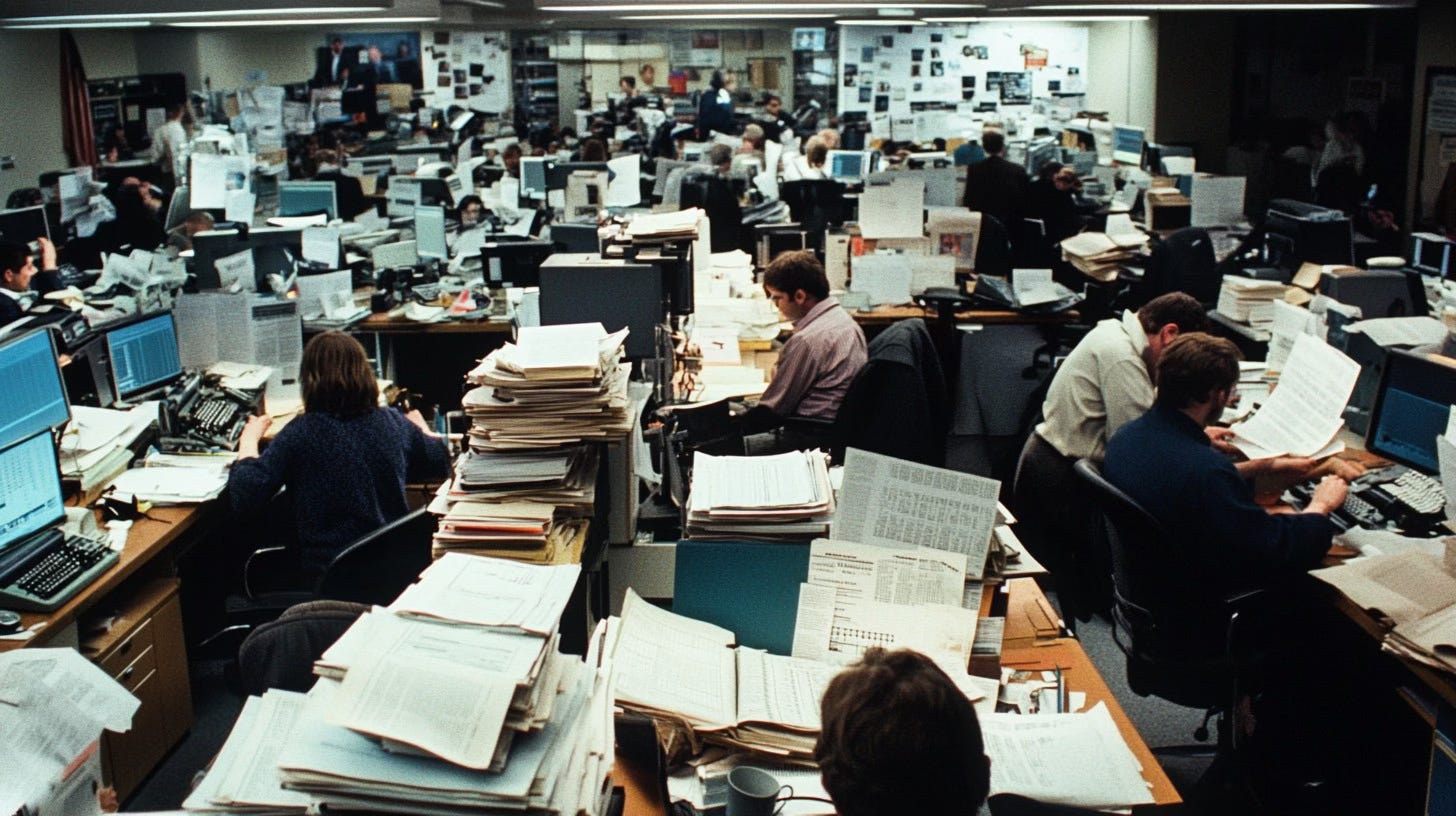A Leadership Mistake I Made (And What It Taught Me About Culture)
Sometimes the most important lessons come from being on the receiving end of good leadership.

I remember it like it was yesterday. I had written a front-page obituary for an important local business leader at the Herald News in Passaic, New Jersey—my first daily newspaper editing job. While some of our layout process was digital, you still had to go into the morgue to look through photo files, then use a pica ruler to measure and crop images for print.
That's exactly what I did: went into the morgue, found what I thought was the right file, took measurements, cropped the photo, and sent it along for the next day's paper. After the copy desk signed off on my story, I went home.
When I arrived the next morning, my phone was already ringing.
"Herald News, Business Desk, Yoni Greenbaum speaking."
"I'm not dead!"
"Excuse me?"
"I'm. Not. Dead."
Without him saying more, it hit me—I had pulled the wrong photo from the morgue and "killed" the wrong person on the front page.
The Panic
I was devastated and terrified. I stumbled through apologies and promised a correction, but as he noted, the damage was already done. I committed to making it right and said I'd call him back.
I collapsed into my seat, immediately thinking of the consequences: the newsroom embarrassment, potentially being fired or stripped of my editor role. My heart was pounding, breath short. Fortunately, the executive editor wasn't in yet to see me falling apart.
The System That Failed
Our newspaper's morgue had no maintenance, no checks and balances. No one ensured photos were returned to the right folders or that names were correct. When photos were pulled for stories, no one double-checked accuracy—just crop measurements. My inexperience and unfamiliarity with local figures completed the perfect storm that put the wrong face on that day's front page.
What I Expected vs. What Happened
I was convinced I'd be tarred and feathered by colleagues, ostracized by the copy desk, and potentially fired by the editor.
What happened was entirely different—and revealed everything about our organization's culture.
Instead of public humiliation, my colleagues gently ribbed me before nearly all shared similar mistakes from their own careers. Learning from mistakes, it seemed, wasn't just accepted in the newspaper industry—it was a rite of passage. The copy desk was critical, but only to remind me of what I already knew: check, check, and double-check your work.
And the executive editor? When I walked into his office with the paper in one hand and the correct photo in the other, he heard me out, looked at everything, and simply said, "Don't screw up next time"—before offering to call the politician himself to smooth things over.
The Real Lesson
That day taught me something no handbook ever could: culture isn't what you say when things go right—it's how you act when they go wrong.
Mistakes aren't usually the result of malicious intent but breakdowns in systems or processes. As leaders, having that perspective is crucial because if we react to the mistake rather than the process breakdown, it will likely happen again.
Carrying It Forward
Years later, when I found myself in leadership roles, that lesson became my north star. In those heated moments when anger and frustration well up, it's tempting to focus on the mistake—the misstated fact, the misplaced punctuation, the wrong photo or video. But the more lasting approach is to examine the process.
What happened that allowed the error to occur and go unchecked? What needs to change in our process, training, systems, or technology to prevent this from happening again?
The questions I learned to ask:
Was this person properly trained for this task?
Do we have adequate quality control measures?
Are our systems setting people up for success or failure?
What safeguards could prevent this in the future?
The Balance
Organizations don't build healthy cultures when there's no room for mistakes and no opportunity for forgiveness and growth. But as I've discussed in previous pieces this week, simply ignoring problems isn't the answer either.
The sweet spot lies in creating psychological safety with accountability—environments where people feel safe to admit mistakes and learn from them, while also maintaining standards and continuously improving systems.
My executive editor understood this intuitively. He didn't shame me, but he also didn't dismiss the seriousness of what happened. He focused on preventing future occurrences while treating me as someone capable of learning and growing.
That's the kind of leader I strive to be—one who sees mistakes as data points for systemic improvement rather than opportunities for punishment.
The Question for Leaders
The next time someone on your team makes a mistake, ask yourself: Am I responding to the person or the process? Your answer will say everything about the culture you're building.
What's a mistake that taught you something important about leadership? I'd love to hear your stories in the comments.



